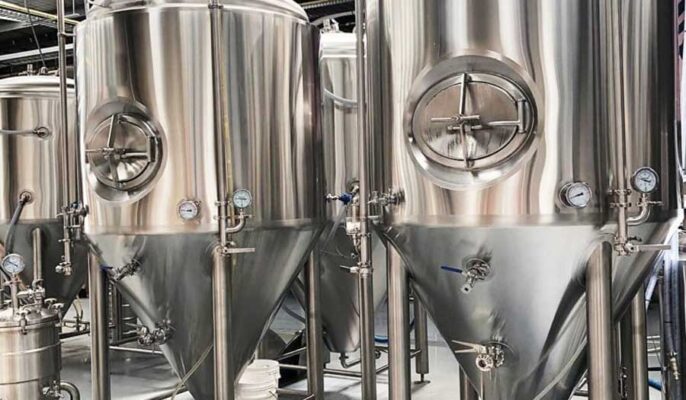Selecting the right beer fermentation tank is a crucial decision for any brewery. The fermentation process significantly impacts the flavor, aroma, and overall quality of the beer. In this comprehensive guide, we will explore the various types of beer fermentation tanks and the factors to consider when choosing the perfect tank for your brewery.
Understanding the Importance of Beer Fermentation Tanks
Beer fermentation tanks play a vital role in the brewing process. They provide the optimal environment for yeast to convert sugars into alcohol and carbon dioxide, allowing the beer to develop its unique flavors and characteristics. The choice of fermentation tank can influence the fermentation process, the consistency of the beer, and the overall efficiency of brewery operations.
Types of Beer Fermentation Tanks
There are several types of beer fermentation tanks available, each with its own features and benefits. Understanding the differences between them will help you make an informed decision.
Conical Fermenters
Conical fermenters are the most common type of fermentation tank in the brewing industry. They feature a cone-shaped bottom that allows sediment, such as yeast and trub, to settle, making it easier to separate the beer during transfer. Conical fermenters are versatile, easy to clean, and provide efficient yeast harvesting.
Uni-Tank Fermenters
Uni-tank fermenters combine both fermentation and conditioning processes in a single vessel. They eliminate the need for transferring beer to a separate conditioning tank, saving space and reducing the risk of contamination. Uni-tanks are suitable for breweries with limited space or those producing a wide range of beer styles.
Open-Top Fermenters
Open-top fermenters are traditional vessels used for fermentation in certain beer styles, such as Belgian farmhouse ales. They allow for spontaneous fermentation, providing unique flavors and aromas. However, open-top fermenters require meticulous sanitation and careful monitoring to prevent contamination.
Horizontal Fermenters
Horizontal fermenters, also known as lagering tanks, are used primarily for lager beers that require longer fermentation and maturation periods at lower temperatures. These tanks have a horizontal orientation, allowing for the proper conditioning and clarification of the beer.

Factors to Consider When Choosing a Beer Fermentation Tank
Several factors should be taken into account when selecting a beer fermentation tank.
Size and Capacity
Consider the size and capacity of the tank based on your production volume and future growth projections. Ensure that the tank’s capacity aligns with your batch sizes and meets the demands of your brewery.
Material and Construction
Choose a tank made from high-quality, food-grade stainless steel that is corrosion-resistant and easy to clean. Consider the thickness and insulation properties of the tank, as they can impact temperature control and energy efficiency.
Cooling and Temperature Control
Look for fermentation tanks that offer efficient cooling options, such as glycol jackets or cooling coils. Precise temperature control during fermentation is crucial for maintaining yeast activity and achieving desired flavors.
Cleaning and Sanitization
Choose a fermentation tank that is designed for easy cleaning and sanitization. Look for features such as smooth interior surfaces, removable fittings, and access points for thorough cleaning. Consider tanks with CIP (Clean-in-Place) systems for automated cleaning processes.
Cost and Budget
Evaluate the cost of the fermentation tank and ensure it fits within your budget. Remember to consider long-term costs, including maintenance, spare parts, and potential upgrades. Balance your budget constraints with the quality and features needed for your brewing operations.
Additional Considerations for Brewery Operations
Space and Layout
Consider the available space in your brewery and how the fermentation tank will fit into your overall layout. Ensure that there is adequate space for maneuvering, cleaning, and accessing the tank for maintenance.
Scalability
If you plan to expand your brewery in the future, choose a fermentation tank that allows for scalability. Consider tanks that can be easily integrated into a larger system or additional tanks that can be added as your production increas




